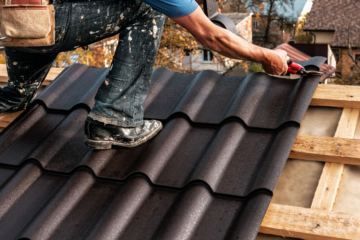
Choosing Roofing Materials That Last
Selecting the right materials with which to repair or replace a roof is a decision impacted by several important considerations. These considerations include the base cost of materials, installation complexity, the quality of the materials, and their lifespan. All these factors impact the overall cost of repairing or replacing a roof.
Today’s market offers a wide variety of roofing materials to choose from. Below we list seven of the most durable roofing materials available.
The Top 7 Durable Roofing Materials
- Composite Asphalt Shingle Roofing: This is the material most homeowners choose for their roofs. With simple installation and a respectable lifespan of about 20 years, composite asphalt shingles are cost-effective and sturdy. A range of asphalt shingle types and grades are available, determining the ultimate cost and longevity.
- Built-Up Roofing (BUR): A built-up roof system comprises layers of fiberglass, felt, and tar, resulting in thick, tough material. BUR is great for flat or low-pitch roofs. It’s an economical but durable material, lasting 20 to 30 years.
- Wood Shake Roofing: For those looking for a more long-lasting and unique option, wood shakes may do the trick. Shakes are made of thick wood and need to be routinely cleaned and replaced if split. However, when properly cared for, this material lasts up to 40 years and provides roofs with a beautiful, organic appearance.
- Metal Roofing: The cost of a metal roof depends on the type of metal used. Options include zinc, aluminum, copper, and steel. Metal roofs are more robust than many other materials, typically lasting 50 years and even 75 years if maintained well.
- Concrete Tile Roofing: Concrete tiles are very durable and an excellent option for those willing to invest. Their weight requires robust framing and more complex roof preparation and installation processes. While concrete tile roofing costs more than basic options like asphalt shingles, it lasts 50 to 100 years with proper installation and maintenance.
- Clay Tile Roofing: Like concrete tiles, clay tiles are heavy and require adequate framing to support their weight. This material is more costly than concrete, but it carries some advantages: clay tiles absorb less water and are less prone to stains and mildew; they hold their original color longer than colored concrete; they are great insulators, and they last about 100 years.
- Slate Tile Roofing: While concrete and clay tiles are molded under high pressure and heat, slate tiles are made from natural rock slabs. This unique, attractive material is the most expensive but the most durable, too: depending on the type of slate installed, this material can last upwards of 200 years.










